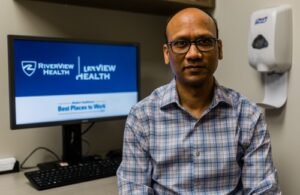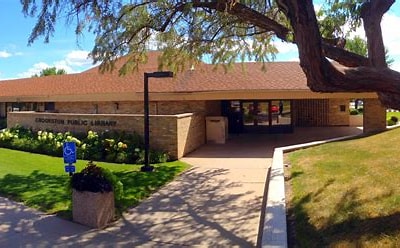Don’t forget to “spring ahead’’ on Sunday, March 10, when daylight savings time (DST) begins at 2 am. Most U.S. residents – with the exception of those in Arizona and Hawaii – follow the Uniform Time Act of 1966, which mandates states use DST, meaning we will lose one hour of sleep with Sunday’s time change.
“While this shift in time may seem minor, it can significantly impact our sleep patterns and overall well-being,’’ Dr. Arveity Setty, RiverView Health Sleep Center medical director, stated. “As a sleep doctor, I’ve witnessed firsthand how daylight savings time affects individuals across different regions, including those living in Minnesota and North Dakota…Everyone responds differently to daylight savings time. Some people adapt quickly, while others may take longer. Be mindful of your sleep patterns during this transition, and prioritize good sleep hygiene to minimize disruptions.’’
According to Dr. Setty, a sleep medicine specialist and pediatrician, following DST disrupts our circadian rhythms. These 24-hour cycles regulate sleep and other key bodily functions such as appetite and mood. These rhythms are largely dependent on light exposure. In order to reset each day, they must be synchronized with natural light-darkness cycles to ensure healthy, high-quality sleep.
The transition from Standard Time to DST means darker mornings and more evening light, which can essentially delay the sleep-wake cycle, making you feel tired in the morning and alert in the evening.
Circadian misalignment can contribute to sleep loss, as well as “sleep debt,” which refers to the cumulative effect of not getting enough sleep on a regular basis.
Start Now to Prepare for DST Dr. Setty recommends the following to ease the transition to DST:
Gradual Wake-Up: In this week before DST, wake up 15-20 minutes earlier each day. By the time the clocks change on Sunday, your body will have adjusted incrementally.
Saturday Reset: Saturday, before DST, set your alarm back by an additional 15-20 minutes. This gradual approach helps your body align with the new schedule.
Sleep Hygiene: Create a relaxing bedtime routine to promote better sleep by limiting exposure to screens (phones, computers, television) before bedtime and keeping your sleep environment cool, dark, and quiet.
To get through DST fatigue, the National Sleep Foundation recommends spending time in bright light during the day to regulate your body clock, eating meals at consistent times daily, and establishing a relaxing pre-sleep routine.
“You need to take care of your sleep and consider implementing strategies to maintain a consistent sleep schedule despite the time change,’’ Dr. Setty continued. “Prioritize your sleep health during this time. Remember, a well-rested you is better equipped to embrace the changing seasons and march forward into brighter days.’’
Rest Assured with Services from Riverview’s Sleep Center
Whether you are having trouble adjusting to DST or have other issues with sleep, RiverView’s Sleep Center offers services to individuals from birth through the end of life. The symptoms of sleepiness, snoring, or an inability to concentrate may not seem like reasons to seek medical attention; however, in addition to the psychological and social effects, any of these symptoms could be the result of an undiagnosed medical condition. Left untreated, sleepiness and sleep-wake disorders can lead to serious health problems, including cardiovascular disease, diabetes, stroke, or accidents due to untreated sleep issues.
RiverView’s Sleep Center, accredited by the American Academy of Sleep Medicine, offers an experienced, objective, and systematic approach to diagnosing and treating sleep-wake disorders. Offering sleep studies since 1996, RiverView’s Sleep Center provides help for Insomnia: Difficulty falling asleep, staying asleep, or waking up too early.
Sleep Apnea: Disruption of breathing during sleep, with brief periods throughout the night when breathing stops. People with sleep apnea may not get enough oxygen and have inadequate sleep. The most common symptoms of sleep apnea are loud snoring, waking up feeling unrefreshed, having trouble staying awake during the day, headaches, waking up during the night, and feeling like you are choking.
Narcolepsy: The need to sleep no matter how much sleep you get at night. You may fall asleep while working, talking, or driving a car, with attacks lasting from 30 seconds to more than 30 minutes.
Restless Legs Syndrome (RLS): RLS is discomfort in the legs when sitting or lying still. Individuals with RLS feel the constant need to stretch or move their legs, which prevents them from falling asleep. Symptoms are most likely to occur during inactivity, especially while sitting.
Pediatric and Adolescent Sleep Disorders: All sleep disorders affecting adults have a pediatric counterpart. The most common problems are of the sleep/wake schedule (difficulty falling or staying asleep or inability to sleep at desired times). Infants and children also suffer from sleep apnea. Narcolepsy typically begins in adolescence and may affect younger children. Unusual motor behavior during sleep may result from sleep terrors, sleepwalking, or nocturnal seizures.
Good health starts with good sleep. If sleep, or lack of it, is a problem, talk to your primary care provider for a referral to the RiverView Sleep Center or call Rehab Services at 281-9463 for more information.
Is it Time for a Sleep Study? Take the quiz to find out by clicking here.





